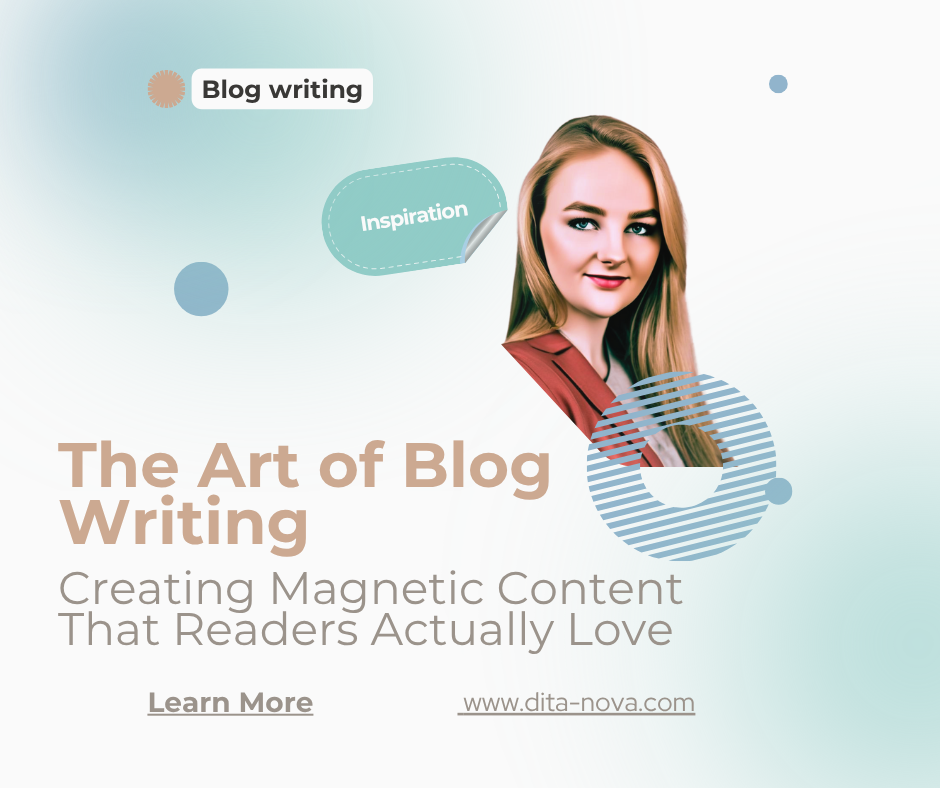Picture this: You’ve just spent three hours crafting the “perfect” blog post. You hit publish with dreams of viral shares and engaged comments. The result? Five views – including your own obsessive check-ins.
Sound painfully familiar?
After years of wrestling with blank pages and analyzing thousands of blog posts, I’ve discovered a fascinating truth: The difference between content people ignore and content they bookmark isn’t about topics – it’s about approach.
Magnetic Introductions: The 15-Second Make-or-Break Moment 🧲
Your introduction is like being a data storyteller – you need to transform dry information into compelling narratives that speak directly to your audience’s imagination. The statistics are brutal: 55% of visitors spend less than 15 seconds on your blog. That means your opening needs to be stronger than morning espresso.
A Personal Reality Check:
I recently analyzed two of my posts with identical topics. The first opened with: “In today’s digital landscape, content marketing is essential…” The second started with a story: “My first blog post was so boring, even my mom didn’t share it.” Guess which one had 300% higher engagement?
It wasn’t just a different opening – it was a revelation that completely reshaped how I approach blog introductions.
Three Techniques for Magnetic Openings:
- Vulnerability Hook – Start with a personal confession or failure
- Counter-Intuitive Twist – Challenge conventional wisdom
- Curiosity Gap – Hint at a surprising discovery you’ll reveal later
Think of your introduction as a movie trailer – it should create anticipation, not give away the entire plot.
Anatomy of Content That Holds Attention ⚡
Quality content marketing isn’t about word count – it’s about value density. Every paragraph should move readers closer to their goal, like stepping stones across a river of information.
My “Rule of Three” for Content Structure:
- Orientation – Where are we and where are we going?
- Transformation – What change are we delivering?
- Application – How do they implement this in practice?
I use this structure consistently, whether I’m writing about branding strategies or any other topic. It works like GPS for reader attention – guiding them through complex ideas without losing their way.
Key Insights That Changed My Writing Perspective:
- Content tells stories, not just information
- Scannable design is a critical communication tool
- Simplicity trumps complexity every single time
Practical Techniques for Sustained Engagement:
Micro-Stories: Instead of dry instructions, use mini case studies. For example: “Client Sarah applied this technique and increased her blog readership by 180% within a month.”
Preemptive Questions: Answer questions before readers can ask them. “You might be thinking – this sounds too complicated. Actually…”
Rhythm Breaks: Mix short and long sentences. It creates musicality.
Like this.
The secret ingredient? Scannable formatting that respects how people actually read online. We don’t read blogs like novels – we scan, skip, and dive deep only when something catches our eye.
Conclusions That Inspire Action 🚀
According to the Content Marketing Institute, posts with clear calls-to-action have 3x higher conversion rates. But not all CTAs are created equal.
My “Action Ladder” Methodology:
- Micro-commit – Small action (save the article)
- Engagement-commit – Medium action (leave a comment)
- Value-commit – Bigger action (subscribe to newsletter)
Bad conclusion: “I hope you enjoyed this article. Don’t forget to subscribe!”
Good conclusion: “Try implementing one of these techniques in your next post today. Then come back and tell me in the comments what happened. I’m genuinely curious about your experiments!”
The difference? One feels like a desperate plea, the other like an invitation to a conversation.
The Secret Weapon: Authenticity vs. Expertise ⚖️
Here’s the paradox of modern content marketing: The harder you try to sound like an expert, the less trustworthy you become.
The best bloggers find the sweet spot between authority and humanity. They share not just successes, but instructive failures. They say “I don’t know” instead of fabricating answers.
Personal Case Study: How One Honest Post Transformed My Engagement
My most successful post ever started with: “I made a $2,000 mistake.” It wasn’t clickbait – I genuinely made that mistake and the article detailed what I learned from it. Engagement was 5x higher than my “expert” articles.
It wasn’t just a different approach – it was a revelation that vulnerability creates connection, and connection drives engagement.
Platform Spotlight: Where to Build Your Blog Empire 🏗️
Before we dive into advanced techniques, let’s address the elephant in the room: platform choice matters more than most people realize.
For those wanting modern design without technical headaches, I’ve found Unicorn Platform to be a game-changer. It combines drag-and-drop simplicity with advanced features like AI copywriting assistance – perfect for focusing on content while maintaining professional aesthetics.
Your Next Steps: From Theory to Practice 🎯
Quality blogging isn’t about perfection – it’s about consistent value and authentic voice. Here’s your action plan:
This Week:
- Analyze your three most successful posts. What do they have in common?
- Rewrite the introduction of your latest article using one of the techniques above
- Experiment with rhythm breaks in your writing style
This Month:
- Implement the Action Ladder methodology in all new posts
- Create a template for content structure
- Start measuring engagement, not just traffic
Remember: The best blog isn’t the one with perfect content, but the one that genuinely moves readers forward.
Frequently Asked Questions About Blog Writing 🤔
What are good blog writing examples to learn from?
The short answer: Study blogs that make you forget you’re reading marketing content.
The detailed breakdown: Look for writers who blend personal storytelling with actionable insights. Some standout blog writing examples include:
- Ann Handley (MarketingProfs) – Masters the art of making complex marketing concepts feel like friendly advice
- Seth Godin – Proves that profound insights don’t need 2000 words
- Rand Fishkin (SparkToro) – Combines data-driven insights with vulnerable leadership stories
My personal benchmark: If I learn something new AND feel emotionally connected to the writer, that’s a blog worth studying.
What’s the ideal blog writing format?
The golden rule: Structure follows function, not trends.
My proven blog writing format framework:
- Hook (15-second attention grabber)
- Promise (what will readers gain?)
- Roadmap (brief overview of journey ahead)
- Body (chunked into scannable sections)
- Synthesis (key takeaways)
- Action (specific next steps)
Format insider tip: Use the “inverted pyramid” from journalism – most important information first, supporting details after. Online readers are impatient, not stupid.
How do I find engaging blog writing topics?
The counterintuitive truth: The best blog writing topics come from your mistakes, not your successes.
My topic-generation system:
- Pain Point Mining – What questions do people ask you repeatedly?
- Contrarian Takes – What “common wisdom” do you disagree with?
- Behind-the-Scenes – What processes do you use that others might find valuable?
- Failure Analysis – What expensive lessons have you learned?
Real example: My post about a $2,000 marketing mistake generated more engagement than any “how-to” guide I’ve written. People connect with authentic struggles more than polished victories.
Can AI help with blog writing?
Honest assessment: Blog writing AI is a powerful assistant, not a replacement for authentic voice.
What AI does well:
- Research and fact-checking
- Headline generation and A/B testing ideas
- Content structure suggestions
- Grammar and flow optimization
What AI struggles with:
- Personal anecdotes and authentic storytelling
- Industry-specific insights from experience
- Emotional nuance and vulnerability
- Strategic content planning
My AI workflow: I use tools like Claude or GPT for research and initial drafts, but the final voice, stories, and insights are always human. Think of AI as a really smart research assistant, not a creative partner.
What are good blog writing examples for students?
For academic and professional development: Blog writing examples for students should balance accessibility with substance.
Student-friendly blog characteristics:
- Clear thesis statements (like academic papers, but more engaging)
- Evidence-based arguments (cite sources, but conversationally)
- Personal reflection (connect theory to real experience)
- Actionable conclusions (what can readers do with this information?)
Recommended student blog examples:
- Medium’s student publications – Great mix of personal and professional topics
- LinkedIn’s student voices – Professional development with peer perspectives
- University blog networks – Academic rigor with accessible language
Study tip: Analyze how successful student bloggers balance credibility with relatability. They don’t try to sound like professors – they sound like informed peers sharing valuable insights.
How do I measure blog writing success?
Beyond vanity metrics: Focus on engagement depth, not just traffic breadth.
Metrics that actually matter:
- Average time on page (are people actually reading?)
- Comment quality (are you sparking meaningful discussions?)
- Email sign-ups (do people want more of your content?)
- Social shares with personal commentary (not just mindless retweets)
My personal success benchmark: If someone references my blog post in a conversation weeks later, that’s worth more than 1000 anonymous page views.



